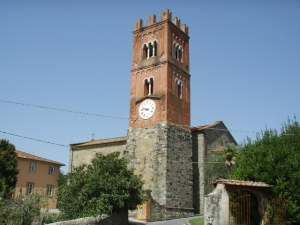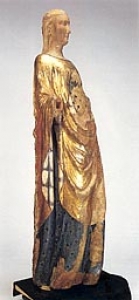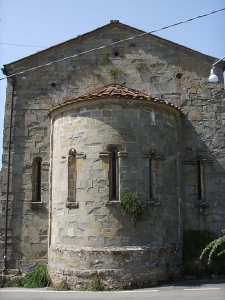
Information
Foundation:
X secolo
District/Location:
Lucca, località San Pancrazio
District:
Piana di Lucca


Resting on the gentle hills that rise towards the Pizzorne plateau, the parish church of Saint Pancrazio is documented since the 10th century but was built in its present form only in the second half of the 12th century.
Via della Chiesa Ventottesima, 55100 Località S. Pancrazio LU
The first documentary attestation concerning the church of San Pancrazio dates back to 983, when however the church was still dependent on the parish church of Marlia. The granting of the right to baptism and therefore the dignity of a pieve given to the church only in 984: since then it exercised this right uninterruptedly until the modern era, having under it the nearby San Bartolomeo di Ciciana and Sant’Andrea di Saltocchio. The current building was completely rebuilt in the 12th century with a single nave structure with a single apse where three narrow single-lancet windows open; two other single-lancet windows open one on each side to the sides of the apse. The masonry with which the building is led is made up of square blocks of sandstone: the uniform greyish curtain - barely enlivened by the hanging arches on the top of the facade and by the shelves that run into the attic along the sides - offers the image of a monumental compact block that the unique ship's incnography emphasizes and underlines. This choice appears unusual for a parish church - for which the three-nave plan was usually adopted - but it is not completely isolated in the Lucca area: the nearby Pieve di Sesto, from which the San Pancrazio probably derives, are in fact a single ship, and the churches of San Leonardo in Treponzio, Sant'Andrea in Caprile and San Pietro a Marcigliano. The numerous post-medieval interventions on the church have all been canceled by a purist restoration of 1855 which intended to bring the church back to its original medieval appearance. In the church there is a painted wooden sculpture of the second quarter of the fourteenth century depicting a saint of uncertain identification: for several years, even with the use of false additions in fabric, she was venerated as Saint Lucia, but the crown signs still present on the head and the sumptuousness of the gilded cloak covered with vaio rather suggest a holy queen such as for example Saint Catherine of Alexandria.
Scopri altre attrazioni vicino a Saint Pancrazio
See allYou may also like..
See allFind more
0














